One Marine Corps Veteran’s Struggle to Keep His Family’s Ranch Alive
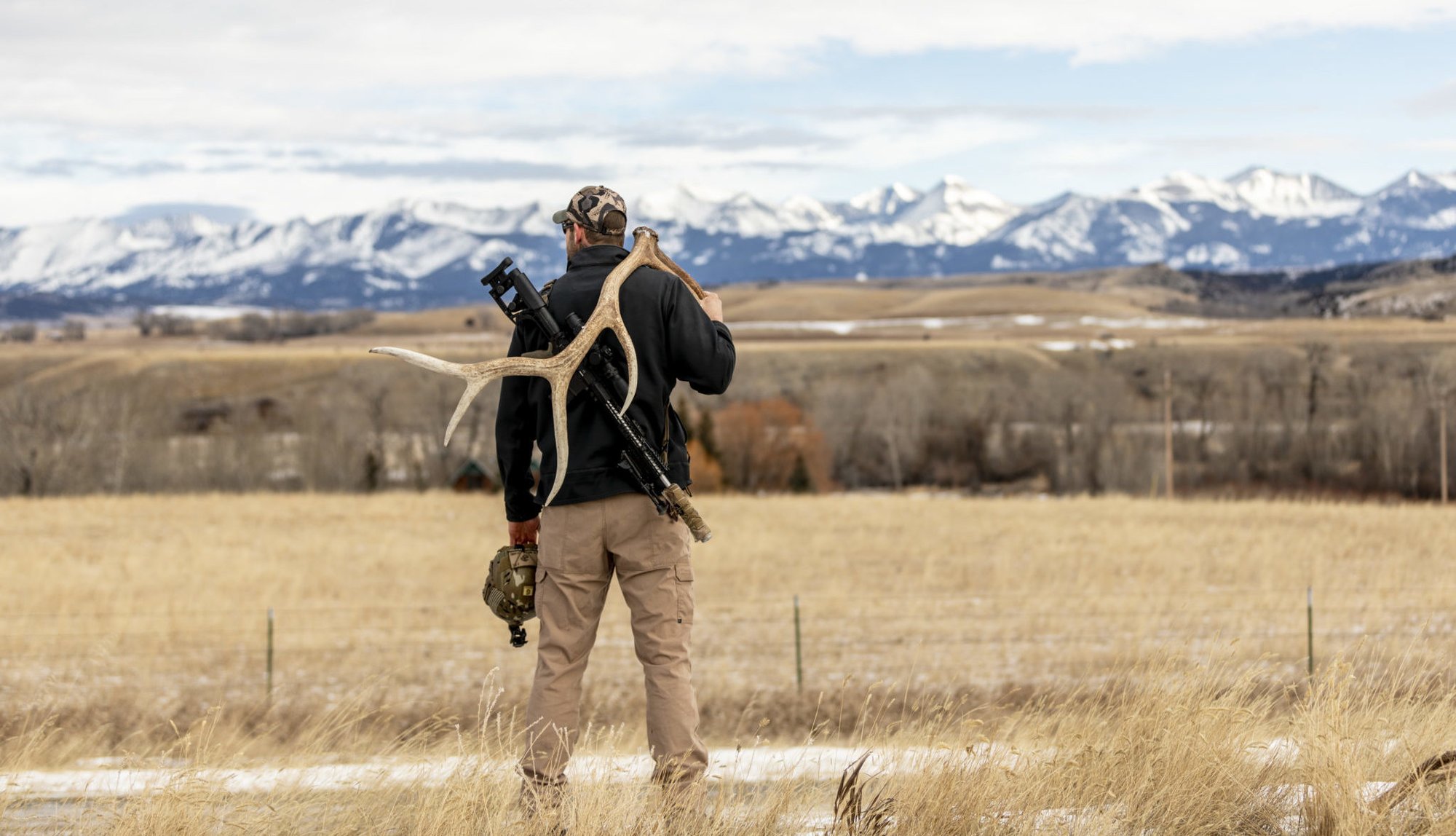
Photo by Marcus Cravens/Coffee or Die.
Winter begins on the high plains of Montana every year as it has for millenia: Massive grizzly bears prepare for their seasonal hibernation, thousands of birds take off for the long migration south, and cattle — a more recent addition to this land — meander to lower elevations in hope that the cold will bite a little less. Fifty-mph winds will soon be howling through the mountain peaks and over the high plains, carrying feet of snow and inches of ice that paint the roads shiny black. Temperatures can drop from 40 degrees Fahrenheit to 10 below zero in a matter of hours.
Montana winters are no place for the weak or faint of heart. In fact, most people would prefer to retreat south with the birds if given the choice. But for Sky Anderson, 58, and his family, proprietors of the Hayhook Ranch just outside of Livingston, this is their “vacation,” a chance to catch their breath and plan for the real hardship of a Montana rancher.
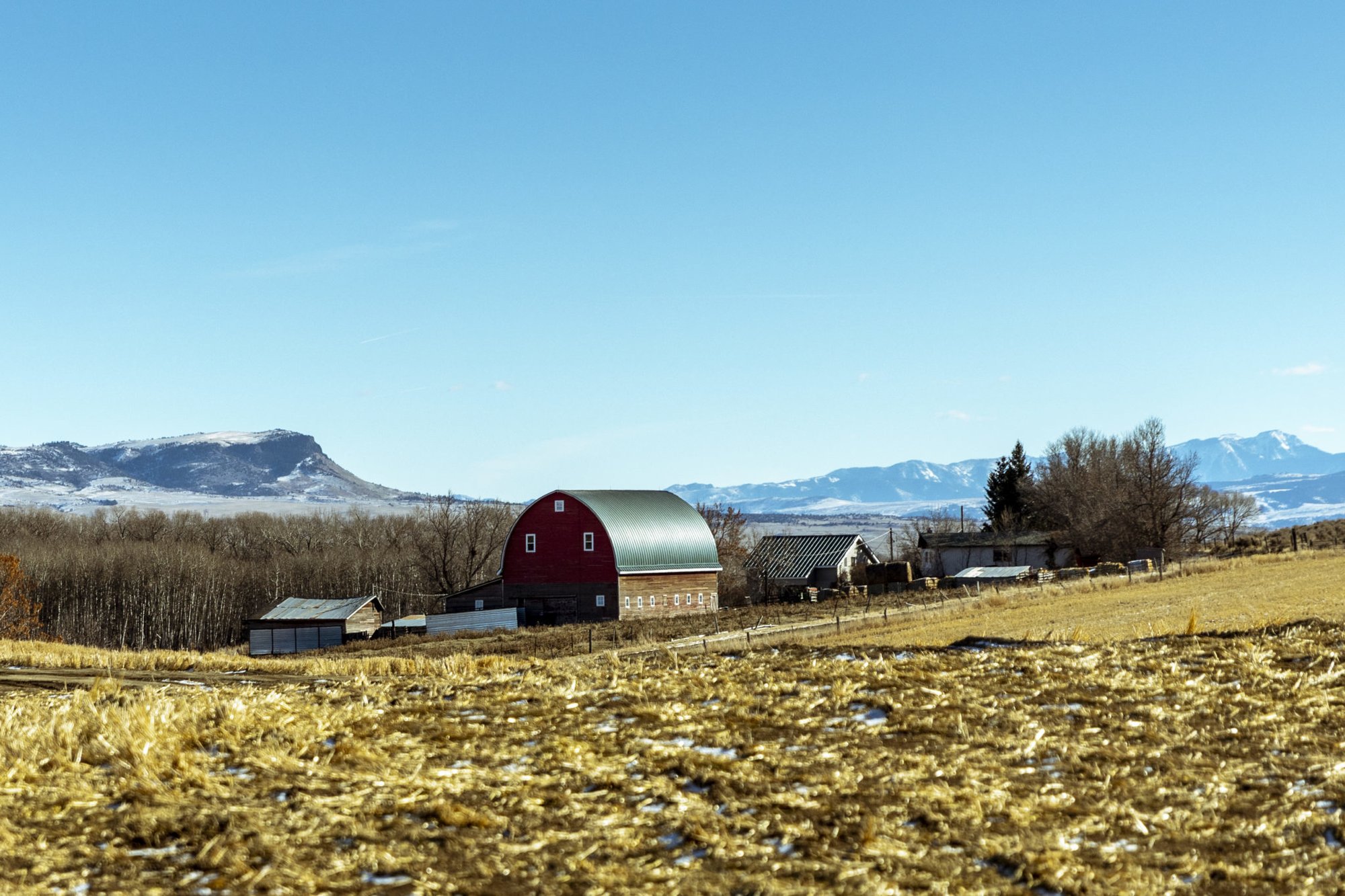
For a rancher in the 21st century, real hardship is working from before the sun comes up until after it retreats behind the mountains, spring through fall. It’s worrying whether you can keep a roof over your head, put food on the table all through winter, and if you’re doing enough to ensure the fruits of your life’s work will be around for your grandkids to enjoy. Hell, will it be around for your own kids?
The next generation of ranchers not only have to face the workload of the past, but they also have to compete with big-box corporations and the inflation of land value. Inflation alone has made the price of selling land so high that ranchers are forced to lease that same land back for their cattle to graze. Land these days is rarely bought by anyone but out-of-state celebrities who often close it to grazing, hunting, and fly fishing (unless you pay the hefty right price for a trophy hunt).
Family-owned farms and ranches are being squeezed out by those who want the status of owning a ranch with no cattle. Or they’re bought out by people who want a high-volume cattle operation without any regard for the stress that will put on the ground. Of course, for them, there’s no connection to the land because it’s just business. Nothing personal, right?

Hayhook Ranch has been family-run since 1959. Sky Anderson grew up on the ranch, and so did his two boys. They have watched the land change, families move in and move out, and critters of all types come and go. The ranching business, at least to the Andersons, is definitely personal.
Despite the challenges, Anderson won’t bend to the ever-present temptation of a corporate buyout, even though it could make life easier for an old rancher. Letting go of the family business is not an option for him. He’s not going to roll over for government regulators that choke the life out of his cattle with naïve land management, nor will he listen to the out-of-state sportsmen groups who want to shout him into submission so they can hunt his elk.
You might say Anderson is stubborn, or unwilling to change with the times. But you’d be wrong. He’s a hard-working man who loves his family, loves his land, and, by God, he loves ranching.
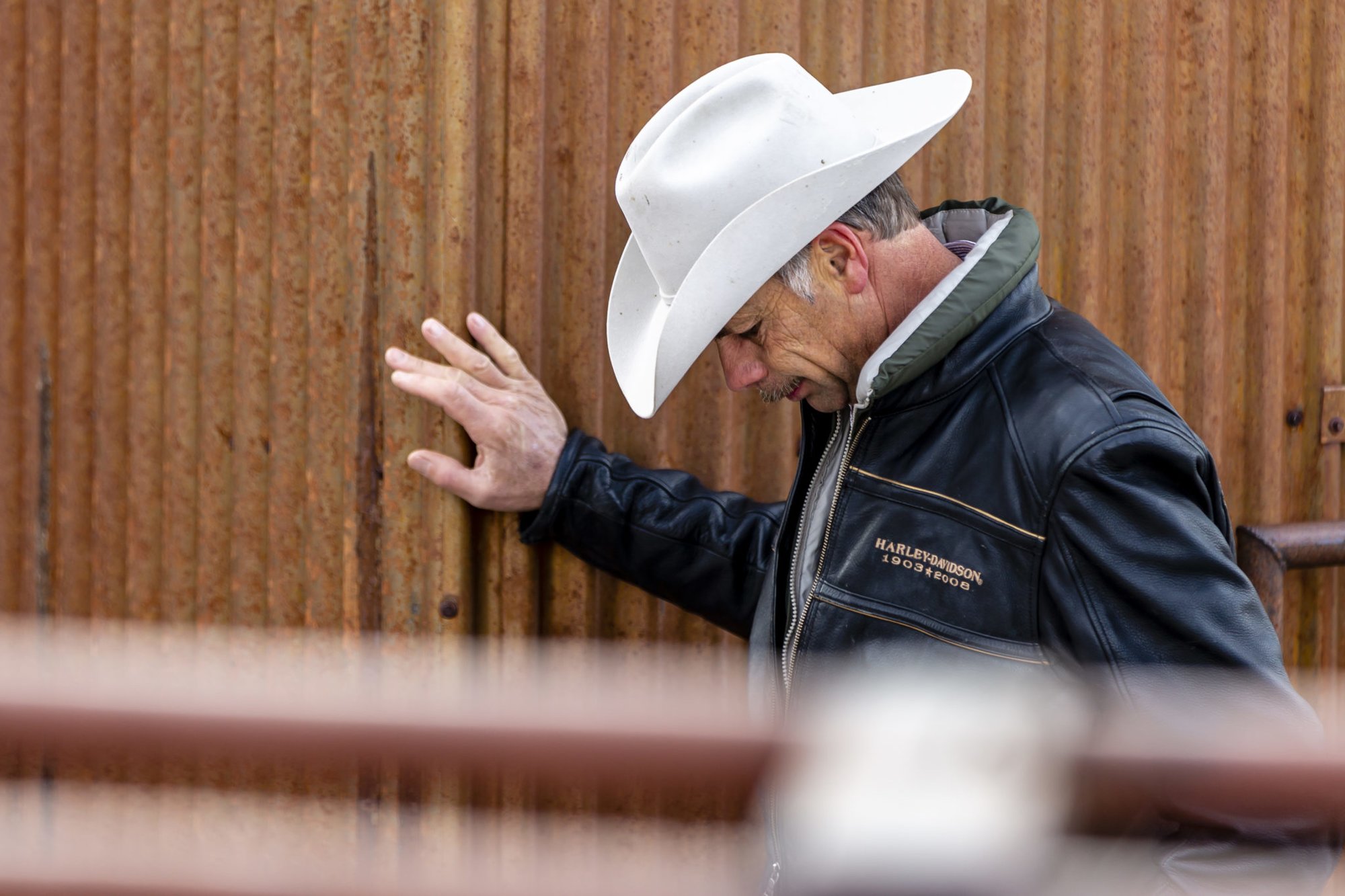
According to the U.S. Labor Department, the average age of farmers and ranchers is now 58.3, up from 50.8 thirty years ago. Anderson knows he can’t do this work forever but sometimes wonders if he’ll be able to pass on the Hayhook Ranch to his sons without sacrificing his core values. He doesn’t want the ranch to simply be given away; they’re going to have to work for it. The foundation of the Anderson family, as in the U.S. Marine Corps, is “Never given, always earned.”
Anderson hasn’t interfered with his children’s choices about what direction they take in life, allowing them to find their own way in hopes that they wouldn’t stray too far from the rancher’s life. He understands the temptation though. After graduating from Montana State University with a degree in animal science, he became a commodities trader in Chicago and later in Bozeman, Montana. He eventually found his way back, though, and assumed ownership of his parents’ ranch.
“No matter where I was in the country,” Anderson said, “I was never far from ranching. It’s in my blood.” That same spirit runs through his two sons, Steel and Stryker.
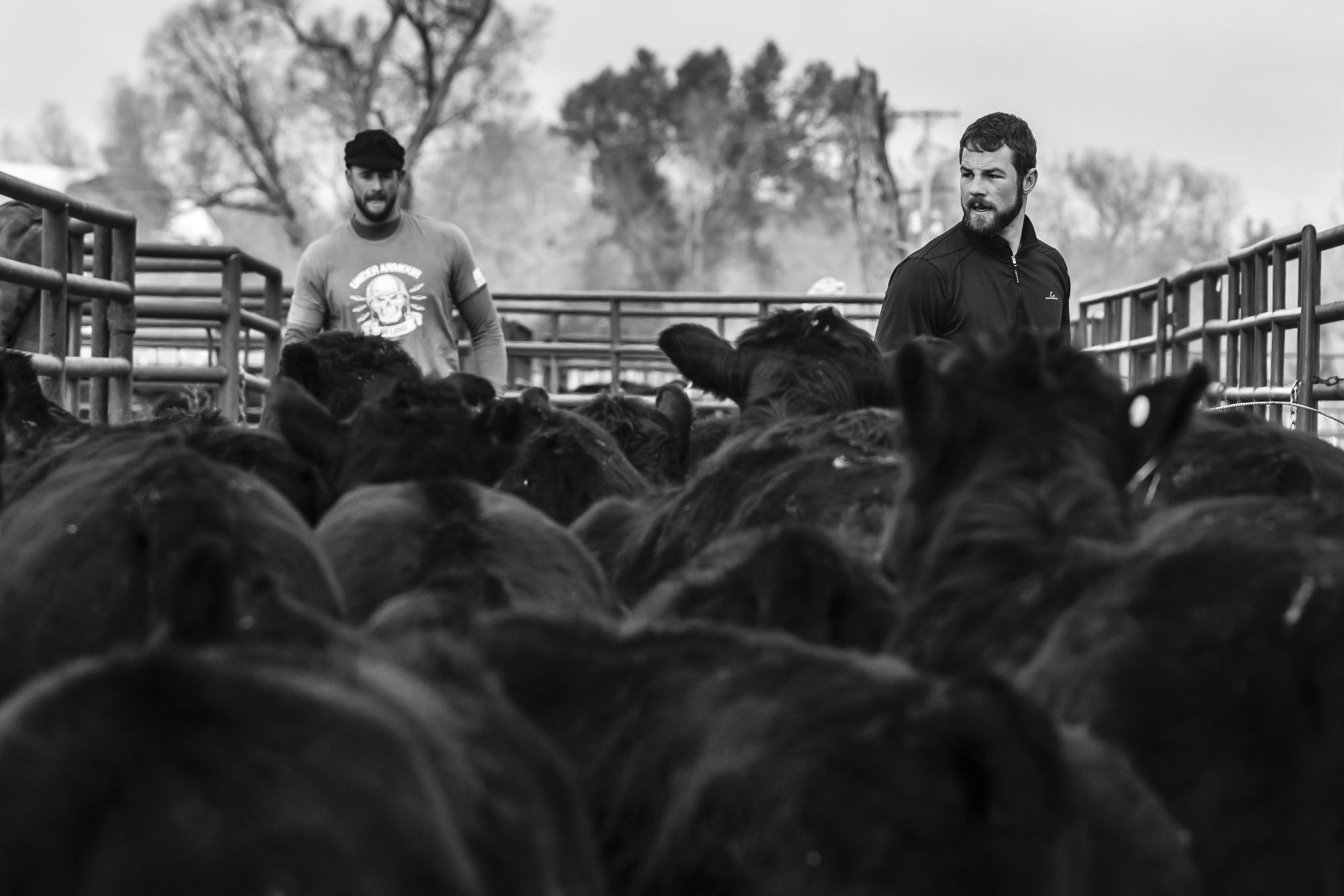
Steel, 28, is the oldest and a successful financial advisor with Edward Jones Investment in Bozeman. He studied at Montana State and California State University, earning degrees in political science and small business entrepreneurship in hopes of contributing to the ranch’s success in the future.
The youngest, Stryker, 26, joined the Marine Corps right out of high school as a forward observer. That decision seemed to be the perfect fit for him as he stands 6-foot-10 and, as he describes, could pick up radio transmissions in any valley of Afghanistan. The rolling hills, mountain peaks, and freedom to hunt, fish, and run cattle on his family’s ranch never left his mind while in the Corps.
Once out of active duty, armed with added discipline and drive, Stryker went headfirst into following his dream of running the ranch. He enrolled at Montana State University to pursue a degree in agriculture business. With straight A’s through his first two years of school, Stryker will finish his studies at Arizona State University to gain a different perspective into agriculture before taking the reins and responsibilities that face his generation’s new breed of ranchers.
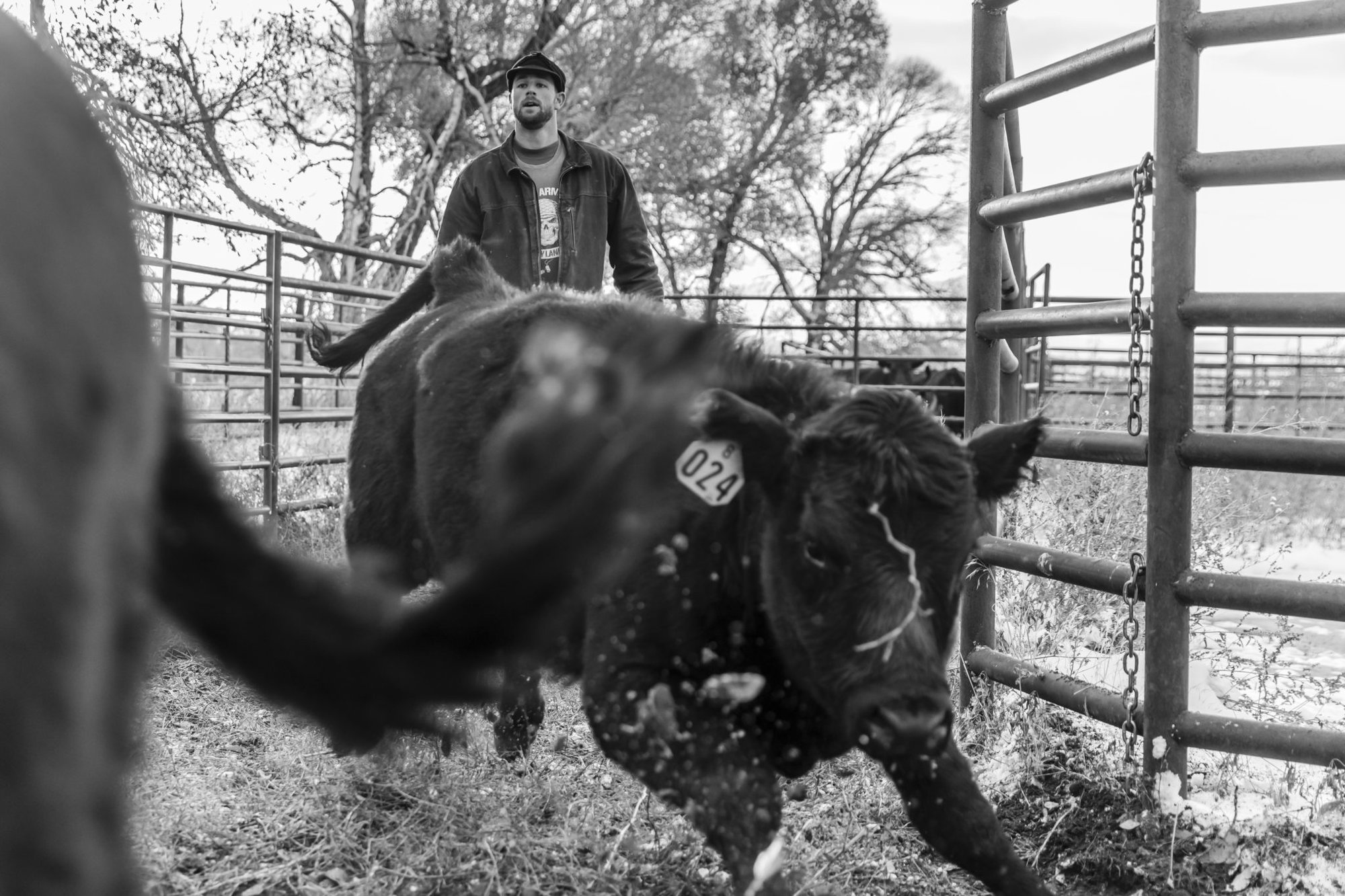
Stryker not only has to prove himself to his dad, but also has a lot of work to do if he wants the ranch to be there for him to take over some day. As he looks to the future, he’s had to face the reality of what it will take to make the ranch’s operation as efficient and cost effective as possible. Learning the delicate balance of land management isn’t easy though, and it’s not as cut and dry as simply moving a few cows — there are other considerations and costs. Especially if you believe new land management techniques combined with modern technology are the future of ranching.
The Andersons split the land on their ranch into lower and upper pastures. The pastures at higher elevations are the summer feeding ground, while the lower feeding ground — which is closer to the main operation — is for winter.
“We start them down here on the bottom,” Stryker said. “We calve down here, where everything is good and close so that we can monitor those calves.” After calving season, the newborns are documented and branded, then ranch hands begin to push the herd to the higher elevation summer feeding grounds where there’s more grass from the snowpack. When the temperature starts dropping in the fall, the cows typically know to head home. In a normal Montana weather cycle, it starts to get cold in October, and that is when the mountains start to turn white with snow.
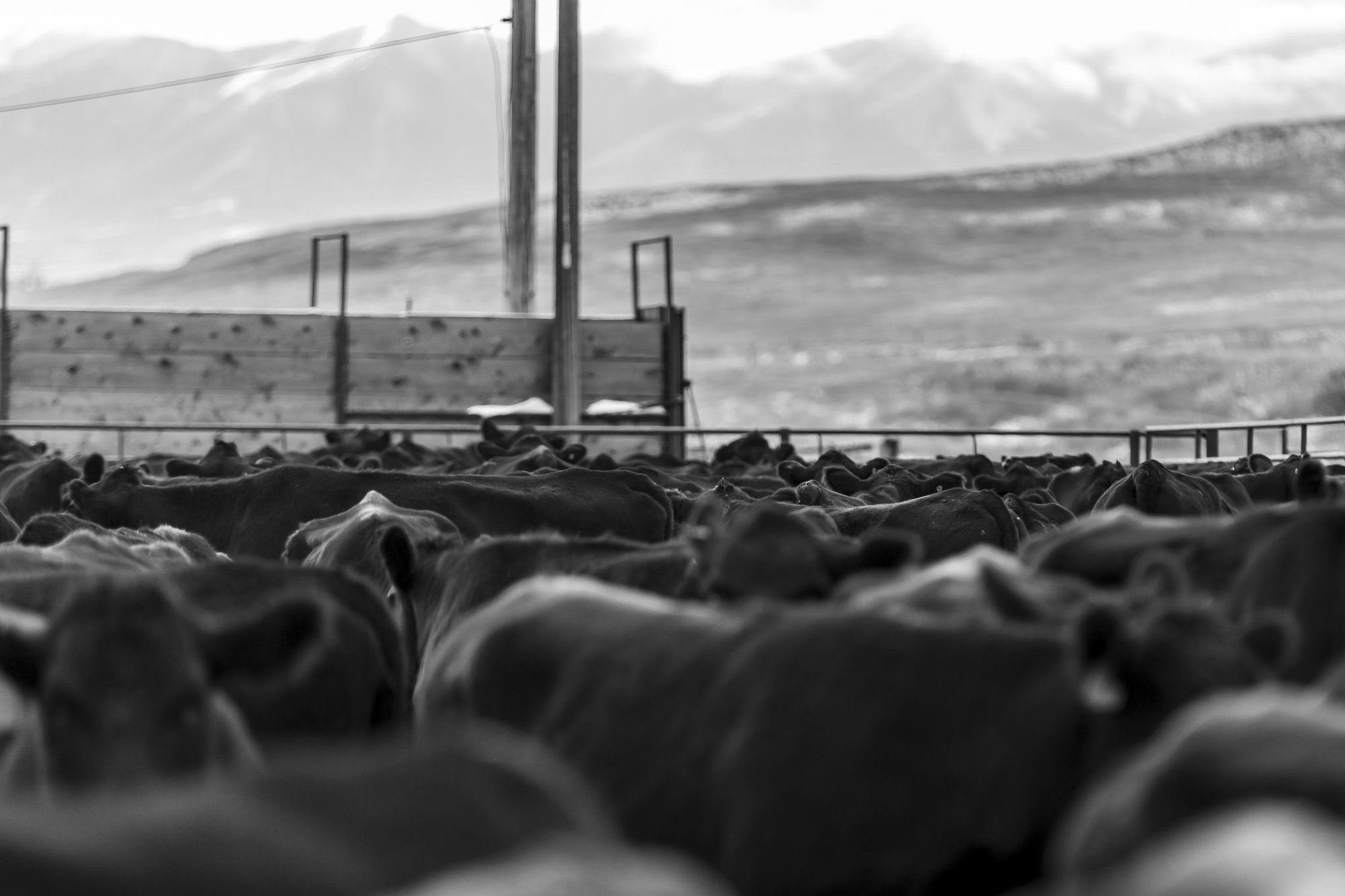
“They’ll come down and will be sitting there waiting for us before we even get there,” Stryker said with a smirk. Understanding how the weather works, which is a 50/50 gamble, and knowing how the land reacts is the first step of land management and caring for the livestock. Carefully timing when you move cattle around to each pasture is imperative to utilizing all available resources efficiently.
Cattle are lazy though. They would rather stay close to their water source than stay in the higher grasslands (which have better feed). Intensive grazing is one of the new techniques being implemented, which pushes cattle to nooks and crannies of the property that are not being used to their full potential.
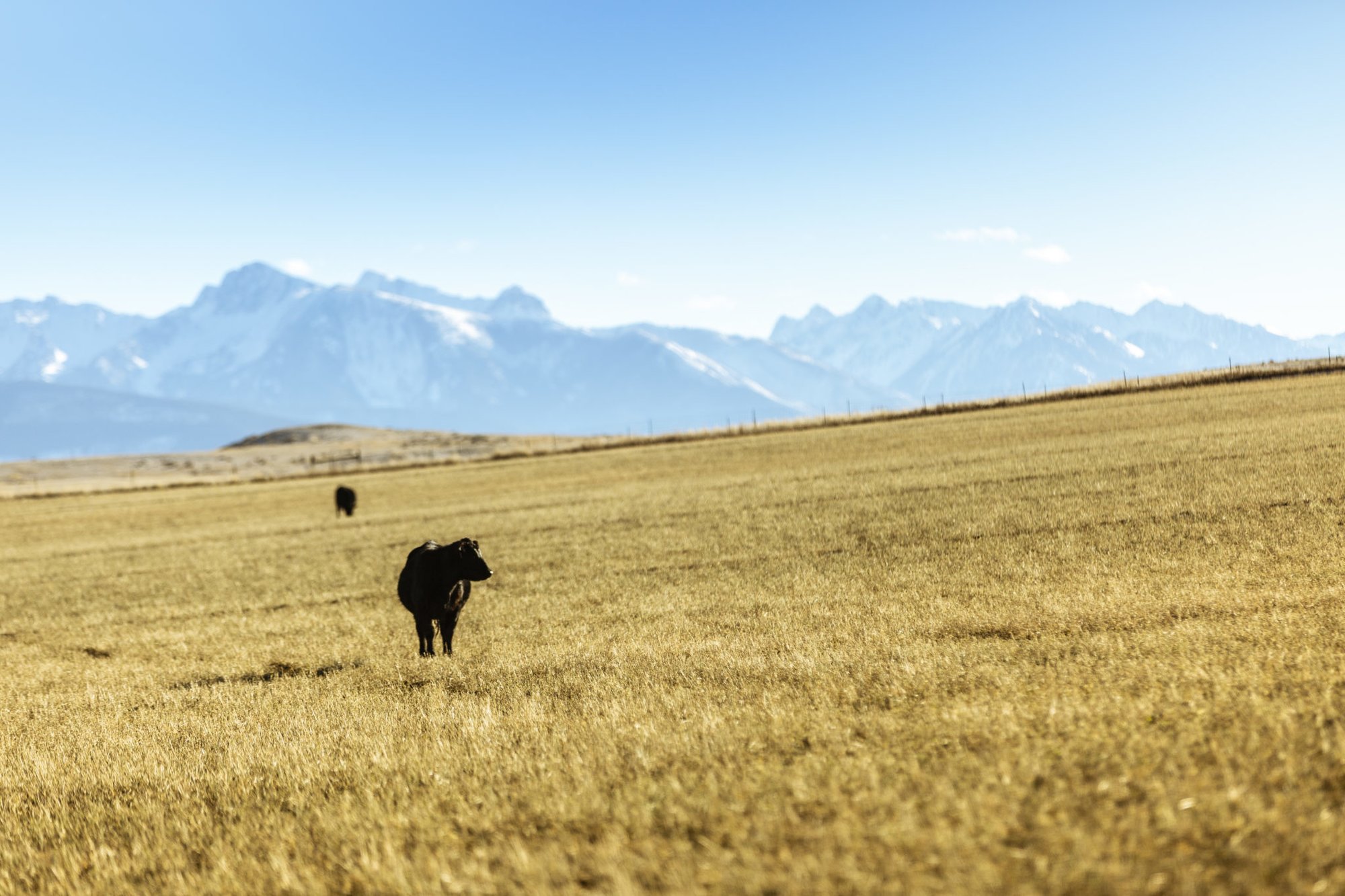
The practice is not only better for the cattle by pushing them to better food sources but is better for the ground and grass in the long term. When a rancher goes into a pasture and hits it hard with the cows for a short period of time, it will bounce back healthier. But when ranchers let the herd graze in one place too long, the ground is stripped of all the organic material that is supposed to return to the soil.
Fencing has been a tried-and-true method used to keep cows from roaming and overeating an area, but mending and maintaining fences damaged by winter snow drifts or migrating elk and deer is a costly and time-consuming chore. Putting up a fence isn’t as simple — or inexpensive — as it sounds. Stryker estimates with all materials and labor, “A mile length of fence costs about $10,000 — at least.” If a rancher has to replace all the fencing around 4,000 acres, that can add up.
Stryker not only has to prove himself to his dad, but also has a lot of work to do if he wants the ranch to be there for him to take over some day.
Stryker has been looking into a company based out of Australia, Commonwealth Scientific and Industrial Research Organisation (CSIRO), which offers virtual fencing technology that is very similar to an invisible fence for keeping your dog in the backyard. Instead of using stakes to set the boundaries, virtual fencing uses GPS. Each cow is assigned a collar that has a counterweight, GPS tracker, and a small solar panel. Using a mapping system on an iPad, “I can pretty much draw in my fences exactly where I want them to be,” said Stryker. The satellite sends a signal to the collars and they begin to beep at the cow when they get too close. “It’s like herding them from space.” Implementing this system would keep the expenses to less than a hundredth of what it would cost to maintain a normal fence line.
It’s money-saving measures like this that can mean the difference in keeping the ranch well into the future.
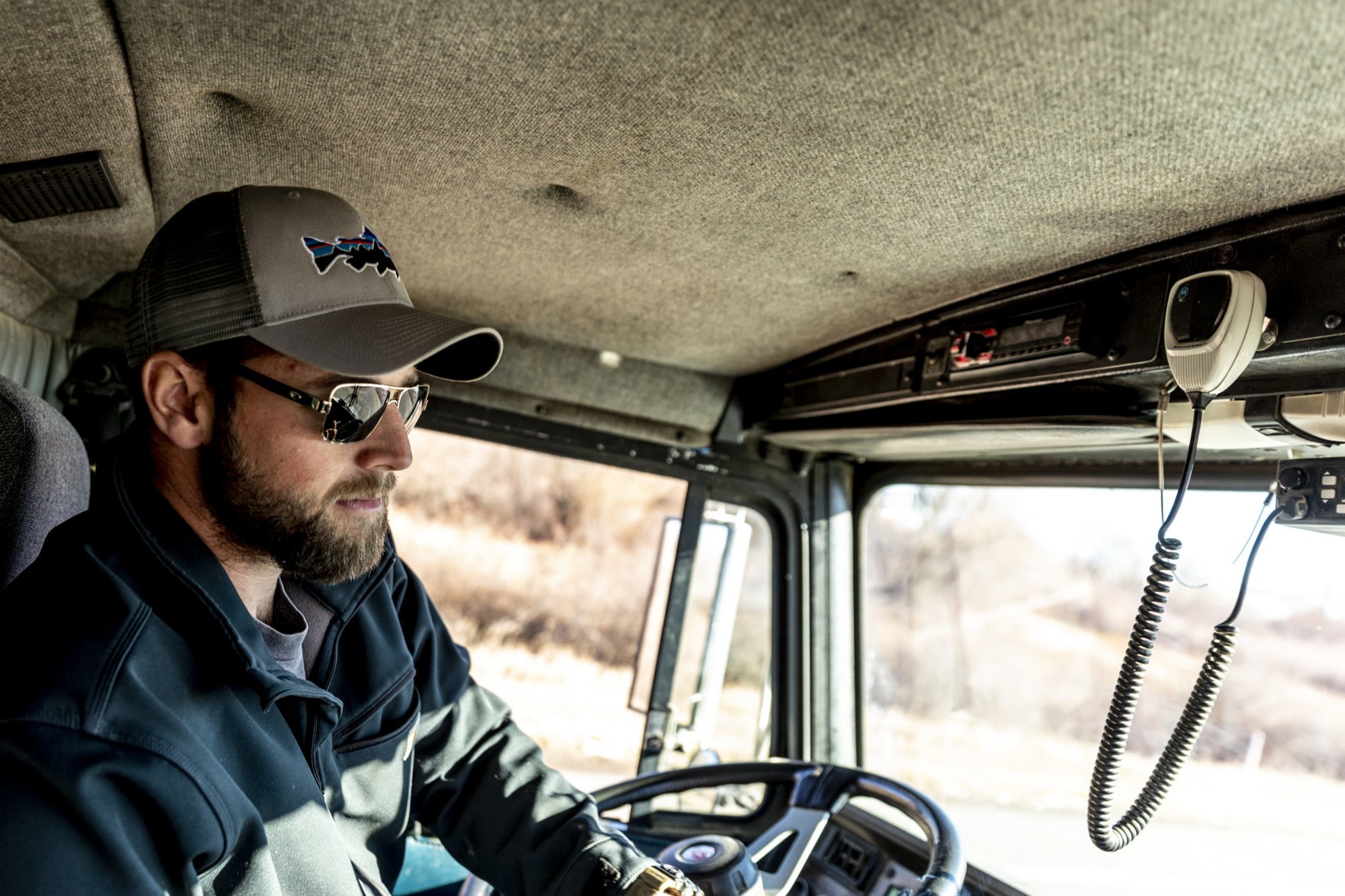
Within one generation, technology has changed the way people and businesses operate and communicate. Of course, a cell phone doesn’t get reception in the middle of nowhere while pushing cattle from one pasture to another, and a rancher doesn’t need a power outlet to charge the batteries of a horse. However, there is a point when a rancher must adapt.
Sky Anderson isn’t opposed to change — “I want to do things right, in the right way, and at the right time,” he said — and Stryker understands that technology alone isn’t the solution; the importance of a strong work ethic cannot be understated, something instilled in him by his father and reinforced by his time in the Marine Corps. The goal is to find the balance between maintaining traditions and introducing modern technology to the business — merging the old with the new.

Stryker isn’t afraid of getting dirty, and he looks for ways to challenge and prove himself, especially in the presence of doubters. Sky brags about his son in a stern but loving way, saying, “The thing about Stryker and school isn’t so much about getting a 4.0 GPA — it is all about the work that goes into getting that GPA.”
“I’m not a smart guy. I have to work extra hard to get there … but I also play hard,” Stryker said with a laugh.
With Stryker graduating in the spring, his ability to work hard will be put to the test. The ranch hasn’t stopped running and the acreage remains the same, but there are fewer workhands. “It’s really just my dad, my uncle, and myself who are out here,” Stryker said. “And for the amount of people we have on this place, we’re trying to be more efficient with the guys we have. With a few ATV’s and some radios, we can keep in touch and be more organized. Just having the radios can reduce 100 hands.”
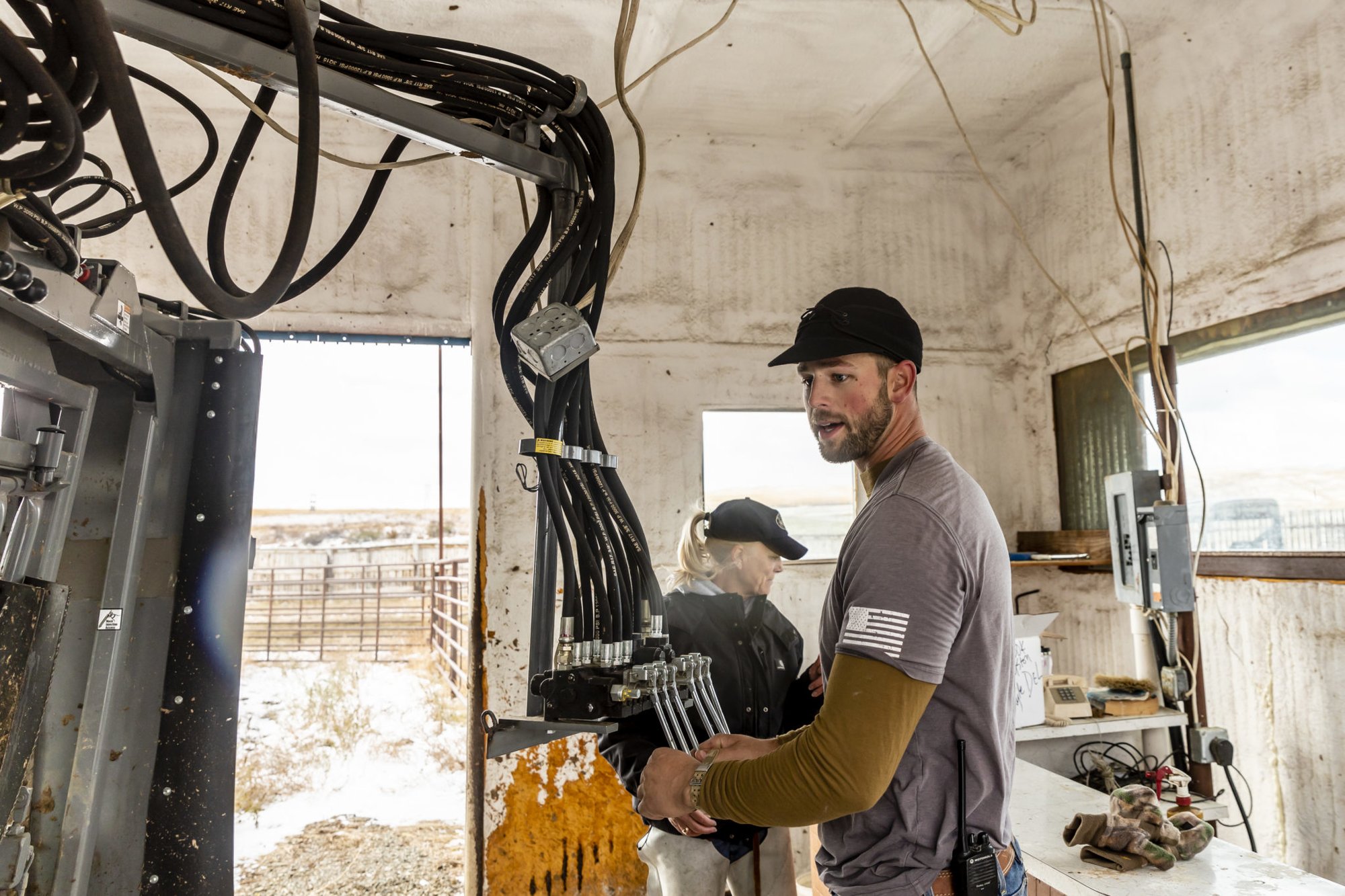
Adjusting to these issues of land management and lack of workforce will allow time for this father and son to tackle the key factor in the survival of the family business. The technology of a virtual fence and a few radios are not going to make any impact on the value or inhabitants of the land. It is going to take hard work and getting a little dirty.
The average price of an acre of land in the Livingston area is $3,614.98. For example, there is one piece of property listed right now at $6,160,000 for 4,395 acres. Those are big numbers, but every cow takes about 20 acres of grass to stay fed. That means the property that has over 4,000 acres can only handle about 200 cows — before you consider the elk, antelope, and deer competing for every blade of grass.
Each head of elk eats about two-thirds of what a cow consumes, and that land has a herd of 100 elk. The deer and antelope will eat the last third, and before you know it, each cow now requires 40 acres of land to keep it fed. The challenge this presents ranchers is like buying a million-dollar home for your family of four in a great neighborhood, but you have to add six more people to your family and must feed them before feeding your children. Your wealthy neighbors tell you to just get rid of your kids because they can’t have kids. And then the government doubles your mortgage.
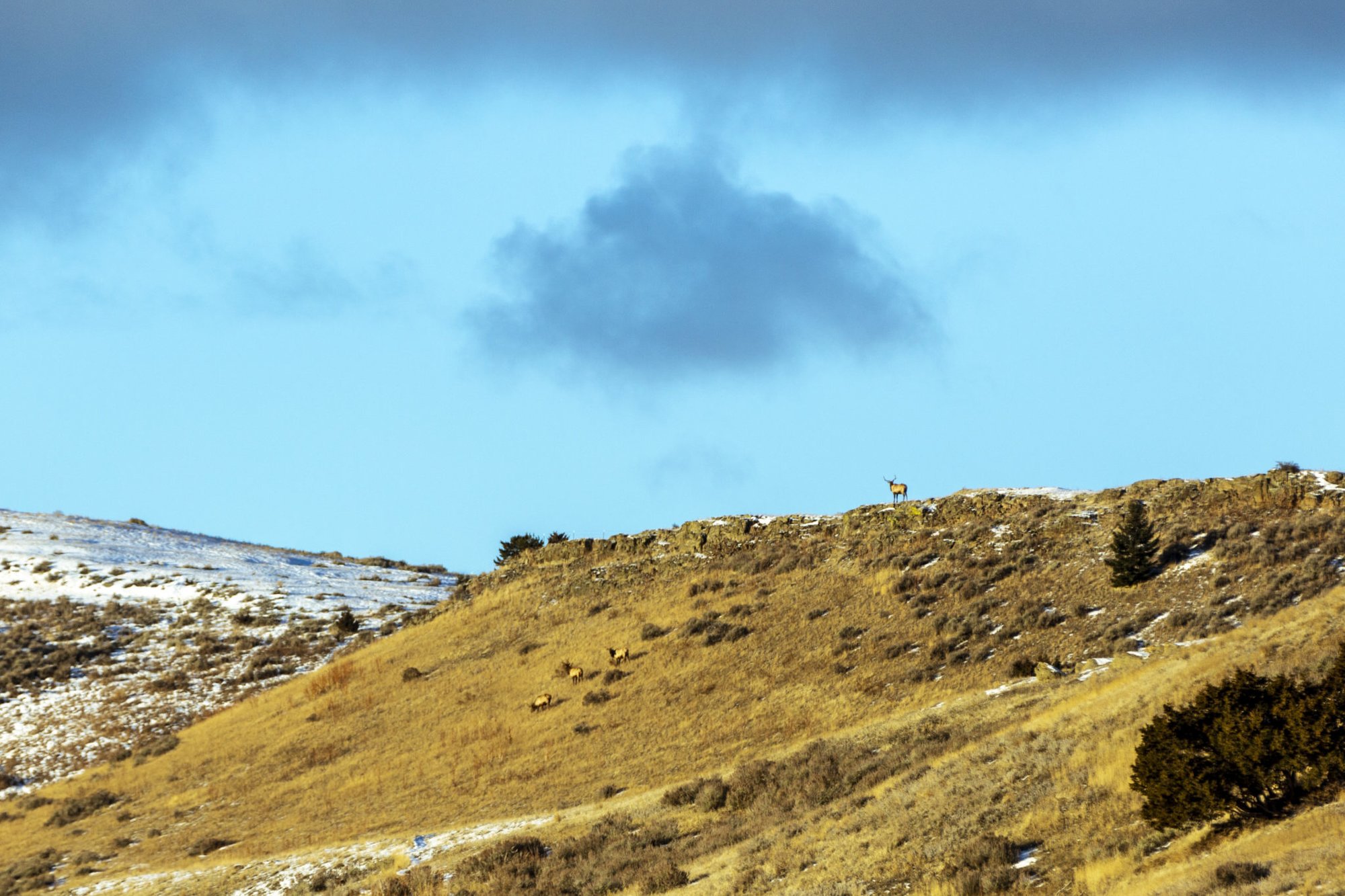
There are a number of unrealistic or unethical so-called solutions with no middle ground. One end of the extreme would involve getting rid of the need for ranchers as a whole and outsource to other countries. On the other end of this extreme, you could eliminate all wildlife. These policies couldn’t be enforced in today’s political and environmental climate, nor should they.
The solution can be found in the landowner/hunter collaboration that primarily focuses on stewardship of all resources on the land, including the animals. Hunters, though, are often looked at as if they came out of the “Bambi” movie, leading people to believe they are mindlessly mowing down any animal they see. However, responsible hunting is a legitimate solution to regulating wildlife and maintaining a healthy population.
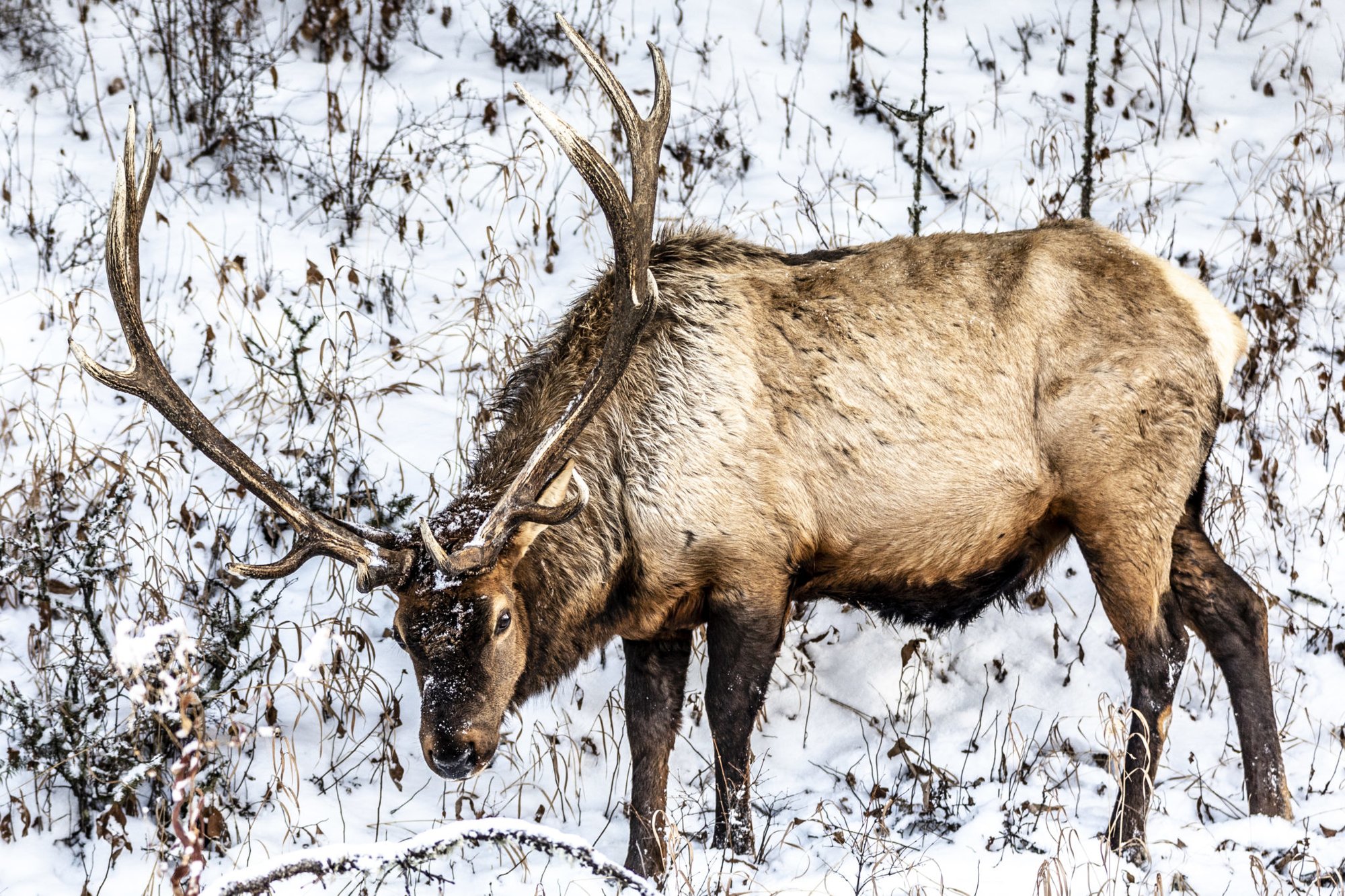
Stryker remembers when the elk started populating the area in late 2008. There are many factors as to why elk, deer, and antelope are moving into new places, and the wolf could be one of those factors. The wolf population in Wyoming’s Yellowstone Park is a heated topic that seems to be on a world stage — everyone has an opinion. But the reintroduction of the wolf is making an impact on ranchers.
“What does the wolf do?” Stryker asked. “It just pushes all those animals out of the park. If every animal in Montana wanted to stay in the park, we wouldn’t have any problems as ranchers.”
As of December 2018, there were over 800 head of elk roaming Hayhook Ranch with no real way of managing them.
…responsible hunting is a legitimate solution to regulating wildlife and maintaining a healthy population.
“The wolves are our biggest worry but aren’t an issue yet,” Stryker added. “The coyotes may get a calf here or there, but that’s not a big deal. Wolves focus on the elk, which doesn’t make the hunters happy, but as a rancher, if the wolves aren’t attacking cattle, we’re happy to have them.”
Even with hunting season in September, there was no real impact on this herd or others in the area north of Yellowstone. Elk aren’t stupid; they know how to survive and where to go. If they can’t stay in the park, where is the next best spot? According to Stryker, it isn’t on public land.
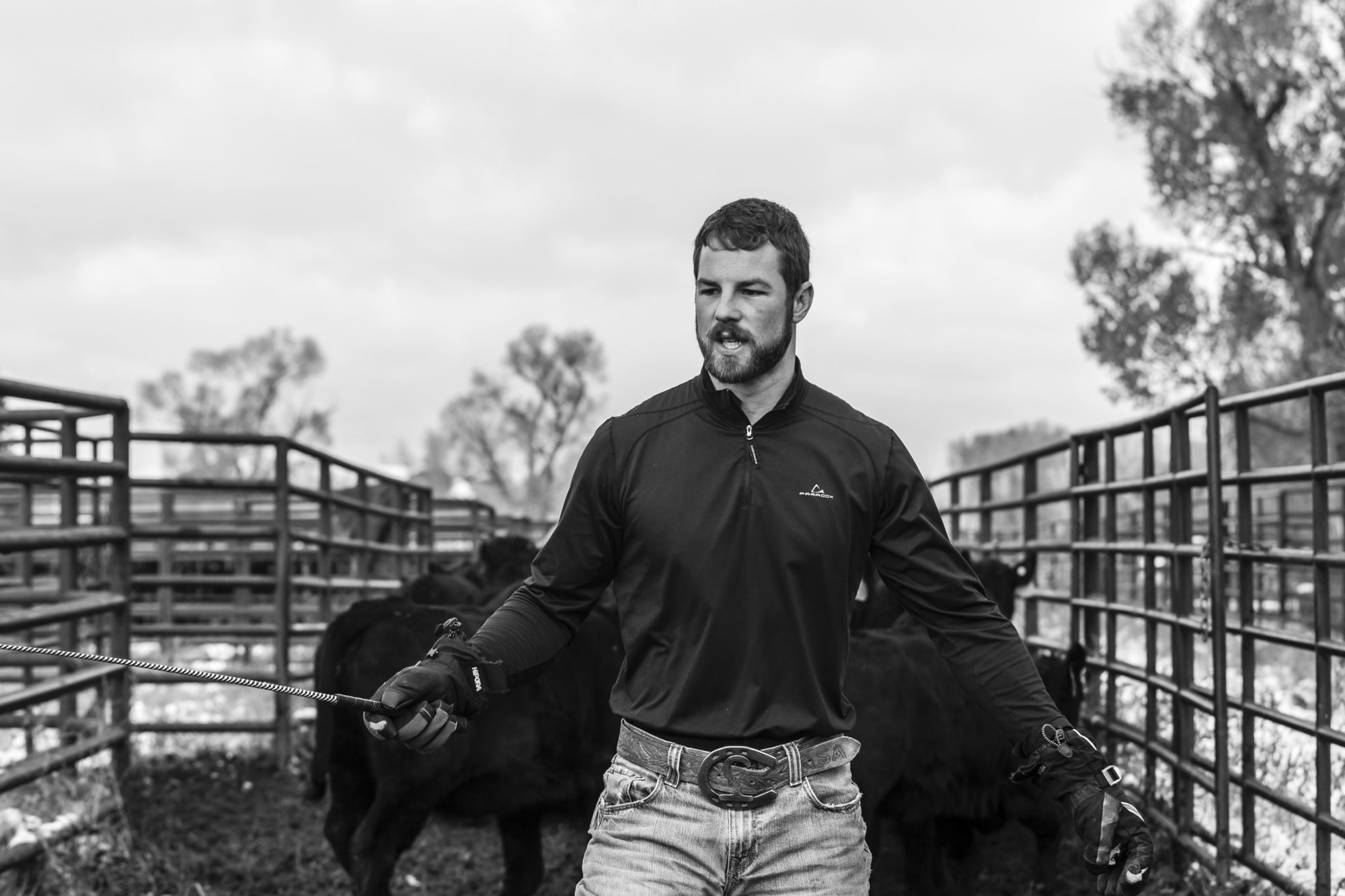
“The public ground is getting so much harder to hunt,” he said. “Every trailhead you see, every single weekend, you’ll see people trying to go out there and hunt,” which pushes deer and elk off public land and onto private ranches. While that may sound good to the average homeowner who enjoys watching the wildlife from their porch, to Stryker — and many others who are torn between the perspective of a hunter and someone who ranches — these critters are stealing food from their cattle. Both rancher and hunter see a way to not only feed their families, but also the people who are starving and/or homeless in the region by donating meat to local food banks.
But ranchers still have bills to pay.
Based on the Montana Department of Agriculture Annual Bulletin of 2018, the average farm and ranch debt per operation is resting at $282,820. In an effort to decrease that debt and help manage the wildlife, landowners have brought in outfitters and guides to hunt.
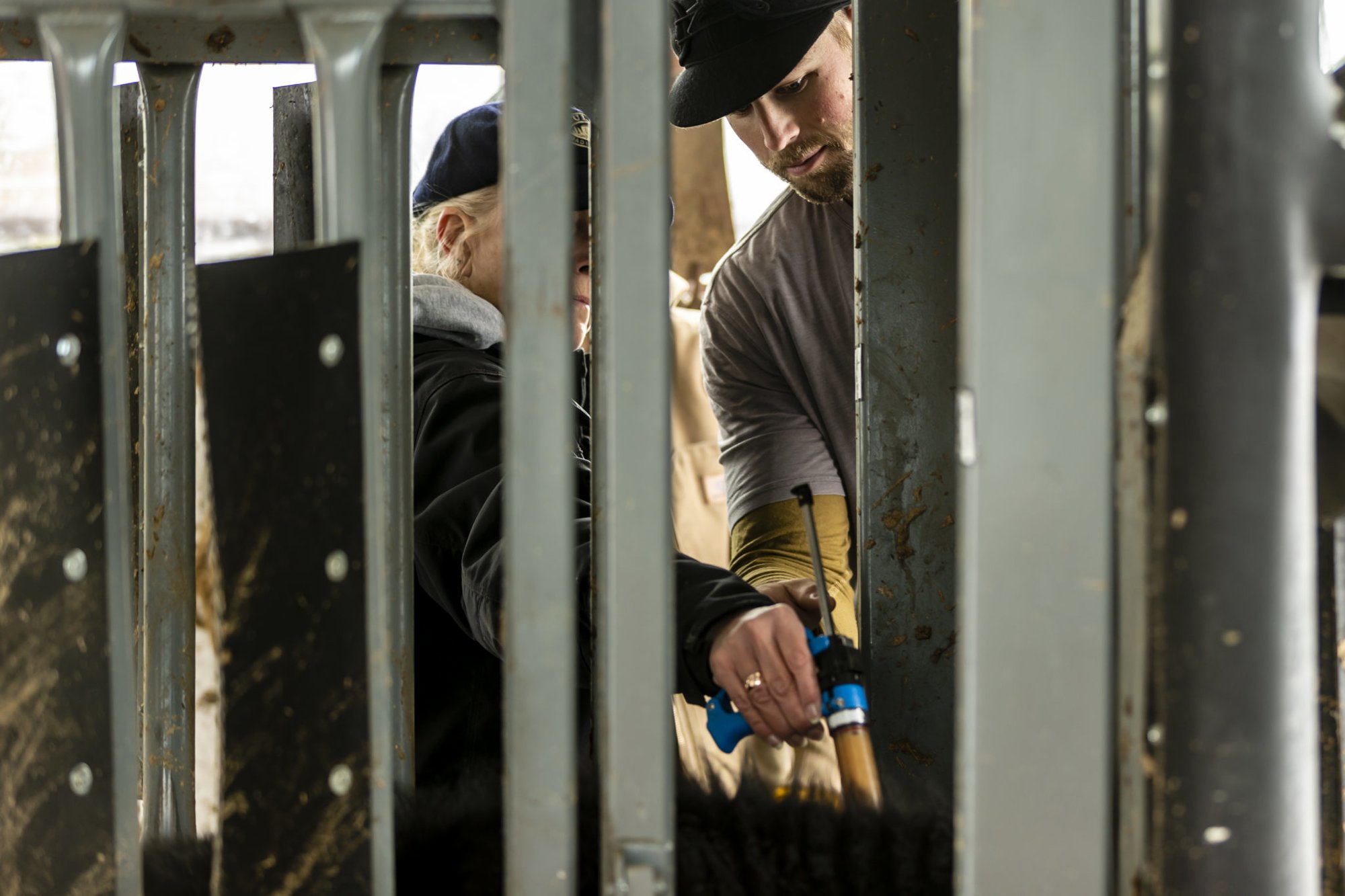
“The reason we are doing outfitters instead of having the public out there is because we are getting compensated,” Stryker said.
It is not just the compensation that is factored in but the protection of being sued when a scene from “Pulp Fiction” plays out in the back of a pickup. Letting the general public roam freely on a property that is not their own results in cattle getting out because gates are left open, as well as empty brass and trash left behind as litter on the ground. In some situations, livestock are killed, and that is thousands of dollars in lost money for the ranch.
Looking out his window, Stryker isn’t taking in the picturesque landscape of the rolling hills and the mountains in the background; he’s watching a large mule deer eating grass a few hundred yards away. Whether you call him a Marine or a rancher — or both — he’s up to the challenges that taking over Hayhook present. In fact, you might even say that everything he has done in life up to this point, to include combat, have uniquely prepared him for what lies ahead.
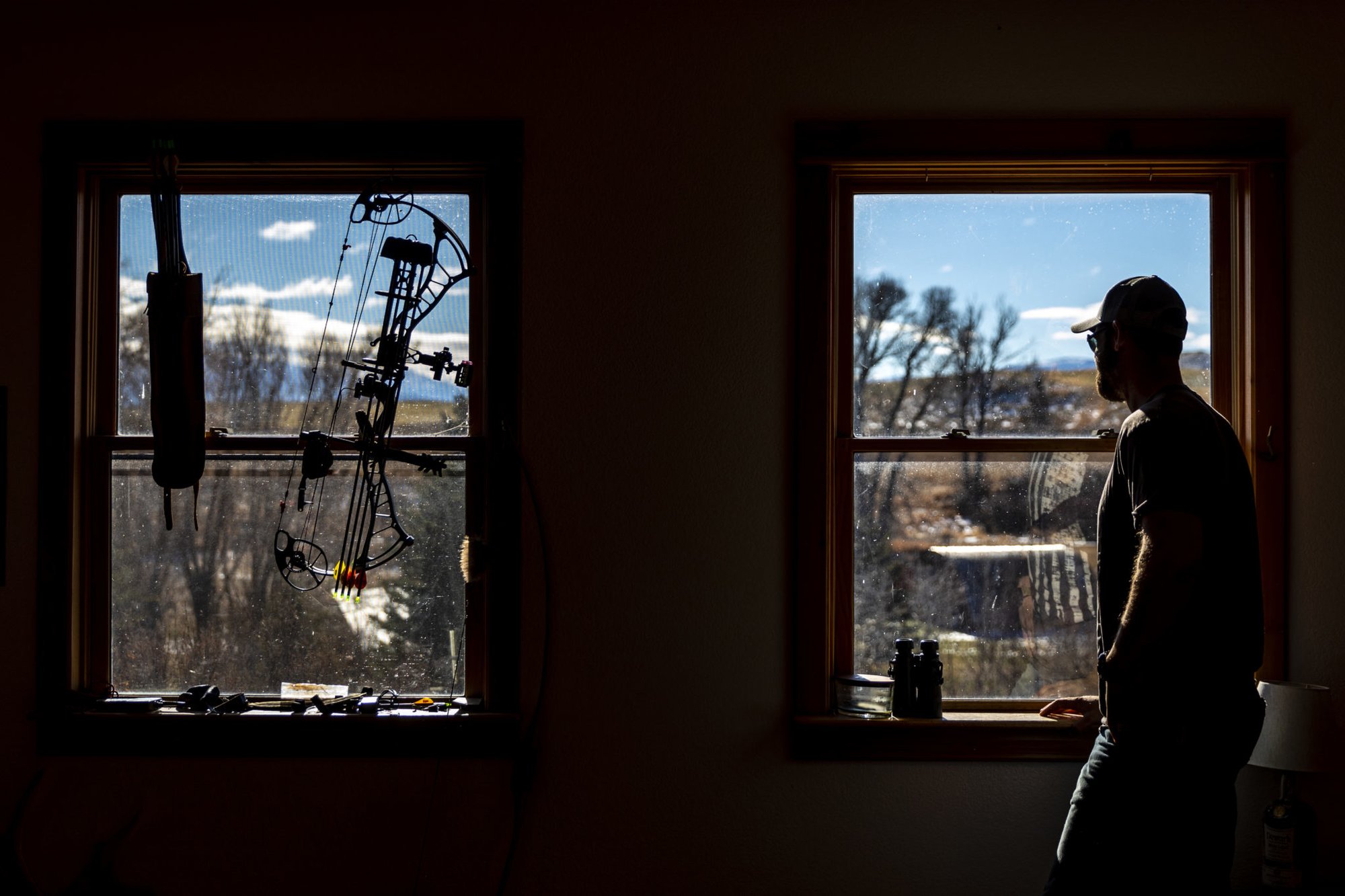
He knows, as his father knows, that if you love ranching, then winter is not the time to huddle around a fire worrying. It’s the time for coming up with a plan to make it through to the next winter. And with the odds stacked against the Andersons and Hayhook Ranch, it will take implementing hard lessons learned from the blood, sweat, and tears of past generations combined with the technology of the future — and maybe even a bit of luck.
And when winter begins its annual retreat and the temperature begins to climb, the tourists will once again flood the area and the real fight will begin. Summer will once again arrive with the threat of droughts and wildfires, or broken levees from melting snowfall. Of course, the winds will still howl. But this year, maybe they will carry hope, too.
Editor’s Note: A previous version of this article incorrectly listed the price per acre of land as $109,278. The price per acre is $3,614.98, and the article has been updated to reflect that. Additionally, the article has been updated with new information regarding geographic locations, Stryker Anderson’s academic record, and clarifications on the ranching equipment mentioned.

Marcus “Doc” Cravens is a curator for the Veteran History and Arts Initiative at Montana State University. After serving nine years in the Navy as an FMF Corpsman, his focus shifted to photography and capturing stories that would otherwise be overlooked and lost. His work with Montanan veterans in his photo essay, American Veteran, has helped inspire VHAI to gather veteran stories and find ways to honor those stories with art. Doc is currently roaming Montana, searching for our warriors before they are lost.
BRCC and Bad Moon Print Press team up for an exclusive, limited-edition T-shirt design!
BRCC partners with Team Room Design for an exclusive T-shirt release!
Thirty Seconds Out has partnered with BRCC for an exclusive shirt design invoking the God of Winter.
Lucas O'Hara of Grizzly Forge has teamed up with BRCC for a badass, exclusive Shirt Club T-shirt design featuring his most popular knife and tiomahawk.
Coffee or Die sits down with one of the graphic designers behind Black Rifle Coffee's signature look and vibe.
Biden will award the Medal of Honor to a Vietnam War Army helicopter pilot who risked his life to save a reconnaissance team from almost certain death.
Ever wonder how much Jack Mandaville would f*ck sh*t up if he went back in time? The American Revolution didn't even see him coming.
A nearly 200-year-old West Point time capsule that at first appeared to yield little more than dust contains hidden treasure, the US Military Academy said.












